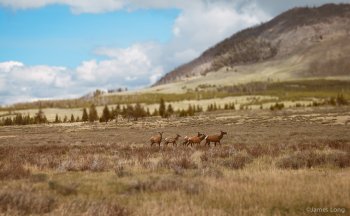Close, but not exactly correct.
Neither RAW nor JPEG can be displayed on any computer or display device, period.
ALL apps that profess to do so convert them to an uncompressed display format specific to the device's display system.
There is no data loss when decompressing and converting a JPEG for display. The data loss associated with JPEG occurs only when the file is generated, but that data loss will be reflected in the display image.
RAW files are a different beast. The display app has two choices. One choice is to process the RAW data using the apps default parameters, sometimes extracting some of the camera setting data stored in the RAW file's metadata. The other choice is to merely extract the JPEG preview that the camera generated and stored in the RAW file's ancillary data, if it can find such data. Either way, the actual data display is NOT EVER a JPEG. If the display image was generated in the app from the RAW data it will not have any of the JPEG compression artifacts and resolution will be limited by the apps RAW data processing and any preview preferences that it may have. If the display image was generated from the embedded preview then the resolution will generally be quite limited, due to the small size of most such previews, and will exhibit JPEG compression artifacts.
[doublepost=1504193666][/doublepost]
Not surprising at all. Real pros are primarily concerned with profit and time is money in their world. Efficient workflow is prime. Image quality tends to be biased toward getting images that are technically "good enough" with the major concerns elsewhere (e.g. pose, lighting, composition, ...).
Those more interested in the craft and/or art side of photography will put a much higher bias on getting the ultimate technical quality.
Tyros (look it up if you don't know the definitiion of "tyro") will be biased toward the method that is easiest and requires the least technical skill.
A professional wedding photographer will often shoot thousands of images per week and need to produce "finished" images of at least several hundred each week. For them, a good JPEG may well be "good enough" for most of their shooting. They don't have near enough time to spend on each image as I do. I work for an art photographer (landscape, wildlife, ...
http://www.alanmaltz.com ) doing all of his image processing. On average, I produce 1-2 finished images per week. For me, RAW is the only sensible choice, though the photographer shoots RAW+JPEG so that he has JPEGs to use when choosing which images he wants me to "develop".


 DSCF2237
DSCF2237 DSCF2091-2
DSCF2091-2 DSCF2044
DSCF2044 What gives?
What gives?